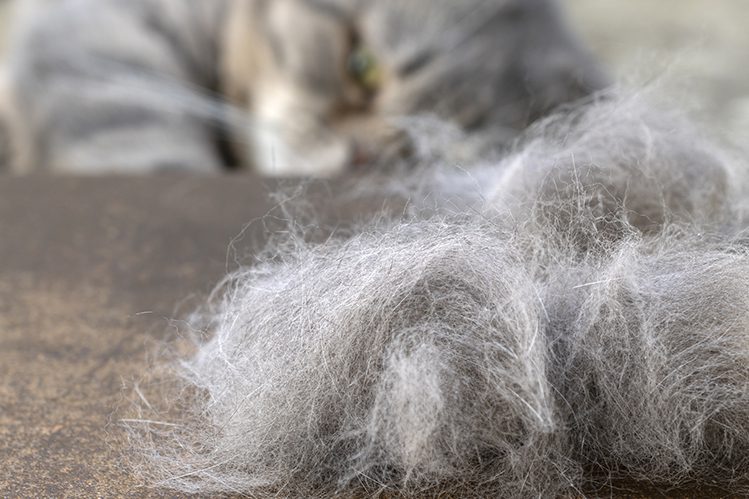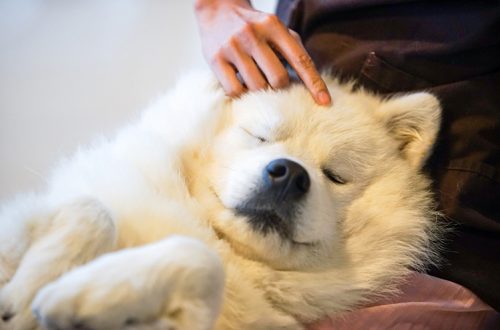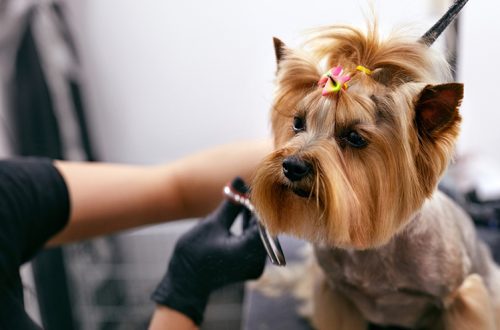
Autumn molt and 5 ways to beat it
How do pets show autumn molting? Do all cats and dogs shed? How not to confuse molting with a dermatological disease? And how to save your house (and yourself) from wool? Let’s talk about it in the article.
All dogs and cats shed. Even if you have a hairless pet, there is still some hair on its body – and it is also updated. But the severity of molting is different for everyone. In some pets, it passes almost imperceptibly, while others literally cover the whole house with their hair.
How the molt will take place depends on many factors: these are breed, individual characteristics, and nutrition, and conditions of detention, and climate, and stress factors.
Autumn molting in cats and dogs can begin as early as the first days of September and end in October. But this happens with animals that spend a lot of time on the street: for example, they are kept in enclosures. Their body reacts to temperature changes and shortening of daylight hours – and begins to renew their coat for winter.
In housing conditions, the molting period can shift by weeks or even months. This is due to the fact that biorhythms in pets change. The apartments are light and warm, and weather changes outside the window do not play a significant role. For the same reason, some pets shed almost all year round, and not just in spring or autumn.

Before you start fighting shedding, make sure you are really dealing with it.
For molting, dermatological diseases, flea infestations and other ailments accompanied by hair loss can give themselves away. How to figure it out?
Seasonal molting is a natural process inherent in healthy animals. Some cats and dogs may experience some discomfort during the molting period, but usually it does not affect the condition and mood of the pet. While the disease is accompanied by other symptoms, in addition to hair loss. The pet may feel worse, he may refuse to eat, be lethargic or even aggressive. If we are talking about dermatological problems, then on the skin you can notice a rash, redness, scratching, sores. Fleas give themselves out as “black dots” that can be seen on the dog’s skin or on its bedding – this is their excrement.
You should be alerted if the dog itches, combs the skin, if the skin is inflamed. And also if the dog’s health worsened, the temperature rose, appetite disappeared, behavior changed.
If your pet has other symptoms besides hair loss, be sure to contact your veterinarian.

So, your pet is shedding and the fallen hair literally flooded the whole house. What to do? It will not be possible to “cancel” the molt, but it is possible to completely reduce the amount of hair shed! Make it real in 5 steps:
- Brush your pet regularly and properly
To do this, we purchase a tool that is suitable for your cat or dog according to the type of coat. It can be a comb, slicker, brush, glove, Furminator.
Furminator in the fight against molting is the most effective. It is equipped with a safe blade that captures not only hairs that have already fallen out, but also those that would fall out in the next two days. After combing with the Furminator, the amount of wool in the house is reduced by 90%. The effectiveness of the tool provoked the appearance of fakes. Be careful. In our article, we told.
How often should you brush your dog or cat? It depends on the characteristics of a particular pet. During the molting period, if there is a lot of wool, brushes and combs can be combed out daily. If the molt is not expressed, you can do with combing 1-2 times a week.
If you use the Furminator, brushing 1-2 times a week is enough. Additionally, it is not necessary to comb the pet with other tools.
Only wet hair can be combed out! Before the procedure, use a combing spray.
- We bathe correctly
It is recommended to bathe cats and dogs 1 time in 21-28 days: this is the cycle of renewal of dermal cells.
During molting, you can bathe more often. The main thing is to use suitable professional products: shampoo and conditioner. Some brands produce special lines for regulating shedding – pay attention to them. Properly selected products will help the coat to recover faster.
- Stocking up on constipation
We continue the topic of swimming. After washing the wool in the bath can be very, very much. So that she does not clog the drain and does not cause new problems, stock up on blockage in advance.
It is better to choose a line specifically designed to remove wool, including hard. Conventional anti-blockage products may not work. Make sure that the composition does not contain chlorine so that the pungent smell does not frighten the pet. Such funds can be found in pet stores (Expel Antiwool).
- We balance the diet
The diet of a cat or dog should be balanced. If the body has enough nutrients, molting is easy, and the new coat grows beautiful and strong.
Give preference to complete superpremium food. They include all the vitamins and minerals your pet needs. If you follow the feeding norm, you will not have to give your pet additional vitamins.
If you cook food for your pet yourself, be sure to include a vitamin-mineral complex in your diet.
- Let’s go to the spa
Have you heard about spas for dogs and cats? Many procedures have been developed for pets, but we are interested in “accelerated molting” or something like that: in different salons, the service may be called differently. During the session, a mask is applied to the pet’s hair, the skin is heated and steamed, and then the hair is combed out. The procedure allows you to remove the maximum amount of dead hair, and this makes it easier to care for a shedding pet.
Another option is to arrange a spa right at home. The ISB brand produces a whole line of home spa treatments with shampoos and masks for deep hair restoration.
Also, don’t forget about yourself. You, too, will not hurt to go to the SPA (human, of course) and recharge with positive emotions. Then you will definitely defeat any molt!





